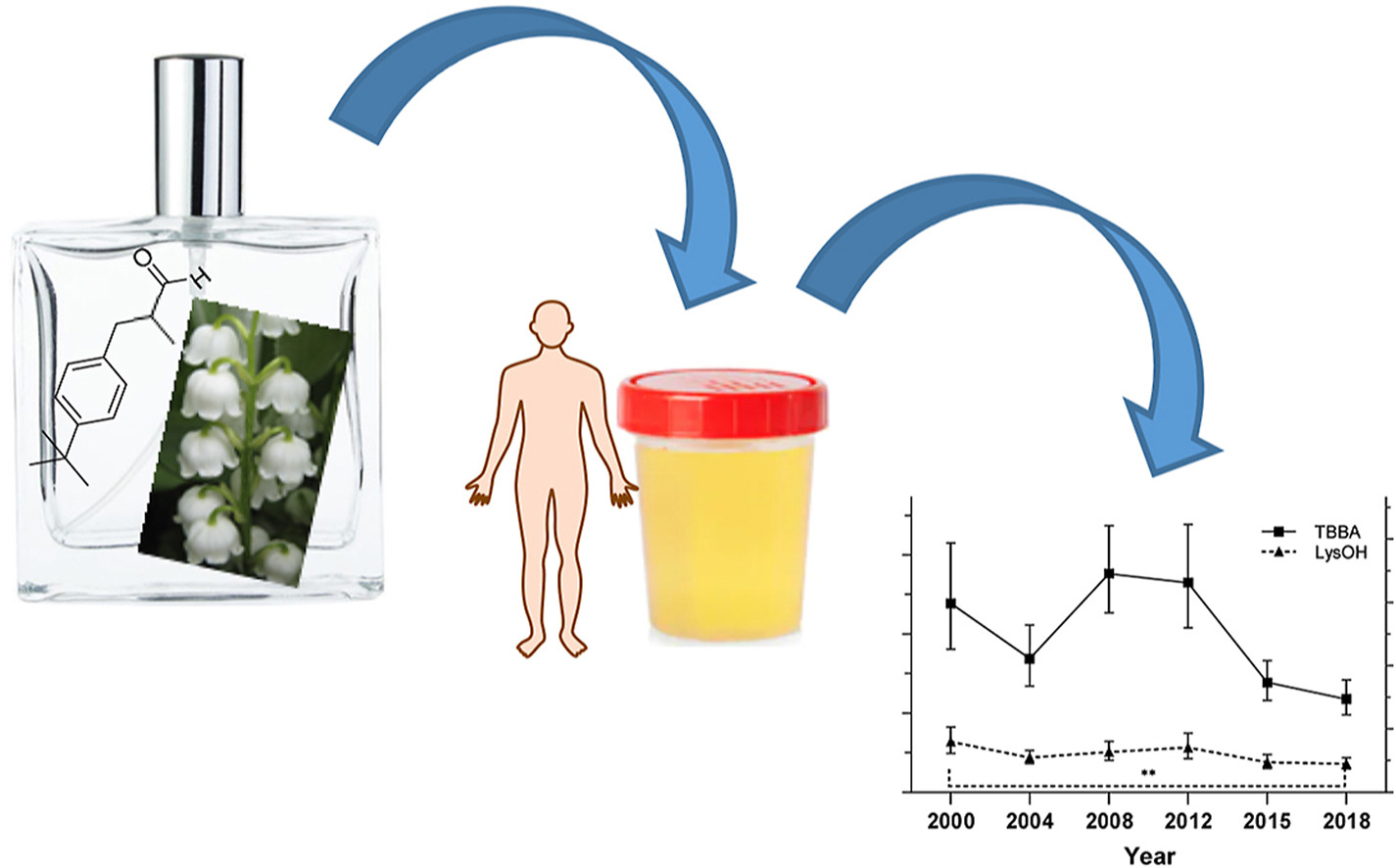Human biomonitoring in urine samples from the Environmental Specimen Bank reveals a decreasing trend over time in the exposure to the fragrance chemical lysmeral from 2000 to 2018
Scherer, Max; Petreanu, Wolf; Weber, Till; Scherer, Gerhard; Pluym, Nikola; Kolossa-Gehring, Marike
Chemosphere (2020), 128955; available online 12 November 2020
Abstract
2-(4-tert-butylbenzyl)propionaldehyde (trade names, e.g. lysmeral or lilial) is a fragrance chemical frequently used in cosmetic products where it is labelled as Butylphenyl methylpropional. A recently developed LC-MS/MS method for the analysis of four lysmeral metabolites (tert-butylbenzoic acid (TBBA), lysmerol, lysmerylic acid, and hydroxy-lysmerylic acid) was applied to 329 urine samples from the Environmental Specimen Bank collected between 2000 and 2018. The two major metabolites TBBA and lysmerol were found in quantifiable concentrations in almost all samples in this study and correlated significantly. Hence, both analytes proved to be specific biomarkers indicating the broad exposure to lysmeral. A significant decline was found for TBBA and lysmerol for the monitored years with the most pronounced decrease from 2012 to 2015. The daily intake (DI) was used to evaluate potential health risks with respect to the derived no-effect level (DNEL) as a threshold for exposure of the general population. The median DI (1.63 μg/kg bw/d) and the 95th percentile (4.69 μg/kg bw/d) corresponded to 2.6% and 7.5% of the lowest DNEL (62.5 μg/kg bw/d for oral administration), respectively. Even though a decreasing trend in exposure was observed the data still calls for efforts to reduce the exposure towards lysmeral since metabolites of lysmeral were detected in nearly all samples and adverse effects cannot be excluded. Clearly, these results need to be substantiated by HBM campaigns in population representative samples like the German Environmental Survey in adults (GerES VI) to provide more robust data for the adult population.
doi: 10.1016/j.chemosphere.2020.128955
